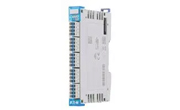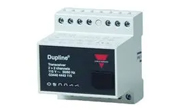Soft PLCs: The software-defined brains of Industry 4.0
Traditional PLCs and changing Industrial automation landscape
Programmable logic controllers (PLCs) have revolutionized industrial automation over the past decades. This transformation has redefined industrial control systems by offering unparalleled control, precision, and reliability. However, with the advancement of industrial Internet of Things (IIoT) technologies, the scope of traditional PLCs has become limited. These limitations include restricted data handling capacity, limited connectivity, scalability constraints, and insufficient computational power to support edge analytics, AI, or machine learning.
Can we find an alternative solution that can overcome these limitations? This article discusses Soft PLC, an alternative to traditional PLC. It also covers their critical role in edge computing and Industry 4.0/5.0 and how Kunbus's Revolution Pi platform is leading this change.
Soft PLCs support various programming languages, including IEC 61131-3 standards
A Soft PLC is a software-based version of a PLC that runs on standard computing hardware. Unlike traditional PLCs, which rely on fixed hardware with limited processing power and connectivity, Soft PLCs operate on general-purpose platforms such as industrial PCs or embedded systems. This allows for greater scalability, cost-efficiency, and integration with IT and cloud-based systems, making them ideal for Industry 4.0/5.0 applications.
Soft PLCs support various programming languages, including IEC 61131-3 standards, and can be easily updated or reconfigured without physical hardware changes. They also offer enhanced connectivity through standard communication protocols like OPC UA server, ModbusTCP/RTU, MQTTclient, EtherCAT, PROFINET, PROFIBUS, and Ethernet/IP, enabling seamless data exchange across devices and networks. This facilitates seamless integration with IIoT ecosystems and cloud-based platforms.
These PLCs also provide superior data handling and computational power, enabling edge computing capabilities such as predictive maintenance, advanced analytics, and remote diagnostics. This helps reduce latency and dependency on external systems while improving operational efficiency. Since Soft PLCs are software-based, they offer easier updates and customization without hardware changes, supporting rapid innovation and improved cybersecurity measures. Their platform-independent nature helps avoid vendor lock-in, fostering interoperability in increasingly complex industrial networks.
Soft PLC's architecture comprises distinct, synergistic components
Unlike conventional PLCs, which rely on proprietary hardware, a Soft PLC leverages software to execute control logic, offering flexibility and cost-efficiency. Instead of a single proprietary box, its architecture comprises distinct, synergistic components, including the following:
Hardware: An Industrial PC or a robust single-board computer (e.g., RevPi Connect 5 from Kunbus) serves as the computing platform, providing the processing power needed for industrial tasks.
Operating system: A general-purpose OS like Linux, enhanced with a real-time kernel patch, ensures deterministic performance and is critical for reliable and timely control operations.
Runtime engine: Software such as Python, Node-RED, or CODESYS executes control logic in predictable, timed cycles, mirroring the deterministic behavior of traditional PLCs.
I/O Modules: Modular I/O slices or network based I/O connect the Soft PLC to physical devices, enabling interaction with the industrial environment.

Figure 1: Architecture of a Soft PLC
The integration of IT into OT is accelerating the adoption of Soft PLCs
Traditional PLCs are dedicated hardware devices for real-time control in harsh industrial environments. In contrast, Soft PLCs are valued for their flexibility and integration capabilities. The following are some key differences between them:
| Feature | Traditional PLC | Soft PLC (e.g., Kunbus Revolution Pi) |
|---|---|---|
| Hardware Platform | Proprietary, closed, vendor-locked | Open, PC-based, standards-compliant |
| Processing Power | Application-specific, limited | Scalable with Moore's Law, high-performance |
| Connectivity & Data | Limited, often requires expensive gateways | Native IT integration (Ethernet, Wi-Fi, USB), supports MQTT, OPC UA, SQL |
| Flexibility | Fixed function (control only) | Multi-function (runs control, HMI, data logging, and analytics simultaneously) |
| Programming | Primarily Ladder Logic (LD), vendor-specific IDEs | IEC 61131-3 standards (LD, FBD, ST), plus high-level languages (Python, C++) |
| Total Cost of Ownership | High upfront cost for advanced features | Lower hardware cost, high value through software versatility |
| Operating System | Proprietary real-time firmware | Open source (e.g., real-time Linux), offering vast library/driver support |
Soft PLCs don't just access machine and sensor data but also process it directly at the edge
Industrial edge computing processes data on-site, near its source, such as factory machines, to minimize latency and enable real-time decision-making. Soft PLCs, running on edge devices like the Kunbus Revolution Pi, enhance this by providing local control and data processing. They integrate with IoT devices via protocols such as Ethernet or Modbus. , enabling instant monitoring and adjustments, such as responding to sensor data to optimize operations.
Unlike traditional PLCs, Soft PLCs offer the computational power for tasks like data filtering, local analytics, or machine learning for predictive maintenance. They can also serve data to local HMIs. This reduces latency for critical decisions, lowers bandwidth costs by minimizing cloud data transmission, enhances security by keeping sensitive data on-site, and ensures operational autonomy during connectivity losses.
A case study from Industrial Analytics IA GmbH demonstrates the above advantages of a Soft PLC. The company faced the challenge of creating a digital twin of an industrial facility. This required reliable data from the control system, high-frequency machine data from acceleration sensors, and pre-processing directly at the source (edge).
To solve this challenge, Industrial Analytics developed an edge box using the Revolution Pi as the central component. This edge box functions as an intelligent pre-processing system. It collects both process data from the industrial control system and machine data using a RevPi analog I/O module.
Revolution Pi serves as an edge computing platform that collects, pre-processes, and prepares data for cloud analysis. The data is evaluated using edge analytics software, divided into batches, and prepared for further analysis in the cloud. This system enables the creation of precise digital twins, which can be used to identify anomalies and simulate new operating conditions. It creates a decisive competitive advantage through optimized plant efficiency and predictive maintenance. In the future, product innovations and alternative fuels can also be simulated in the digital twin.
Revolutionize your manufacturing with Soft PLC
Soft PLCs are transforming industrial automation by offering flexibility, cost savings, and seamless integration with modern technologies. Their role in edge computing and Industry 4.0/5.0 positions them as key enablers of innovative, sustainable, and human-centric factories.
Industries can achieve data-driven automation through platforms like Kunbus’s Revolution Pi, as demonstrated in applications such as digital twins. As technology continues to advance, Soft PLCs will use advanced AI/ML models to analyze precise process data and optimize manufacturing processes. Farnell offers a comprehensive portfolio of products, including compute modules and I/O modules, to reshape your industry into Industry 4.0/5.0 using a soft PLC.










